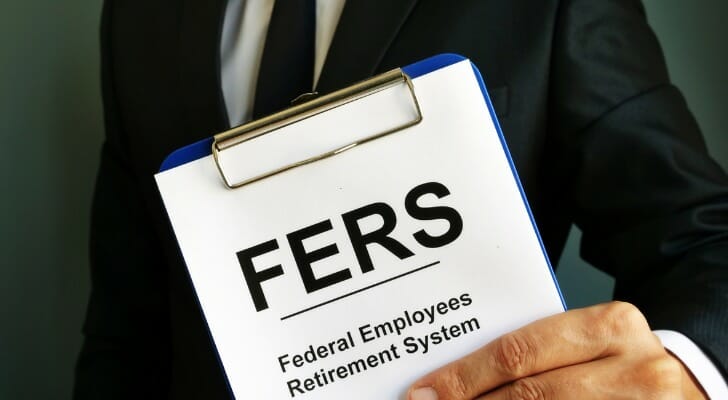The Federal Employees Retirement System (FERS)
There are plenty of retirement plans for workers: 401(k)s and pension plans set up through your employer, IRAs you can manage on your own and Social Security benefits available to every American who’s paid into the...Wednesday, February 19th 2020, 2:06 pm
 There are plenty of retirement plans for workers: 401(k)s and pension plans set up through your employer, IRAs you can manage on your own and Social Security benefits available to every American who’s paid into the system. Meanwhile, government workers have a retirement program specifically made for them: the Federal Employees Retirement System (FERS). Here’s what it looks like and the various plans it offers.
There are plenty of retirement plans for workers: 401(k)s and pension plans set up through your employer, IRAs you can manage on your own and Social Security benefits available to every American who’s paid into the system. Meanwhile, government workers have a retirement program specifically made for them: the Federal Employees Retirement System (FERS). Here’s what it looks like and the various plans it offers.
The Federal Employees Retirement System (FERS) is a retirement plan for U.S. civilian employees. It covers employees at all levels of the federal government. Everyone in Congress and the Supreme Court has FERS.
While FERS is great for government employees, it’s limited to civilians who work at the federal level. State and local governments and military personnel aren’t covered by FERS.
How Does FERS Work?There are three different parts of the FERS package: the Basic Benefit Plan, Social Security and the Thrift Savings Plan (TSP).
Basic Benefit PlanIn this pension, you’ll pay a certain amount each period and your agency withholds the cost from your payroll deductions. Your agency will also match contributions. When you retire, you’ll receive a set amount every month for the rest of your life.
Social SecurityThe Social Security part of FERS is identical to what non-federal governmental workers participate in. You pay a certain amount each pay period that your employer or agency matches and then withholds your contributions as payroll deductions. You’ll also get payments every month once you retire. With Social Security, you can take these benefits to your next job if you leave the federal government but don’t retire. Our Social Security calculator will tell you how much you can expect in retirement benefits from Social Security, depending on factors like you retirement age and lifetime earnings.
Thrift Savings Plan (TSP)The Thrift Savings Plan is like the federal government’s 401(k) option. Your agency deposits 1% of your pay into your account every pay period. You can also make your own tax-deferred contributions, with your agency matching contributions up to 5%. You can also take TSP with you to your next job if you stop working for the federal government before retirement.
How to Collect your FERS BenefitsIf you’ve ever been a federal employee and paid into FERS, there’s a chance you could cash out on your retirement plan.
Eligibility is determined by your minimum retirement age (MRA). For instance, those born between 1953 and 1964 have a minimum retirement age of 56. Those born in 1964 will hit that age in 2020.
Immediate retirement benefits kick in at different times. You can collect immediate retirement benefits if:
- You’re 62 years of age and have five years of service
- You’re 60 years of age with 20 years of service
- You’ve hit the MRA with 30 years of service
- You’ve hit the MRA with 10 years of service – this level means your benefits will be reduced by 5% for every year you are under 62
You can also take an early retirement benefit if you’re 50 years of age with 20 years of service or any age with 25 years of service. Disability retirement is available if you’ve served 18 months. There’s no age requirement for disability retirement.
If you leave your job before becoming eligible for retirement, you can cash out and receive a lump sum. Or, if you have at least five years of creditable service, you could wait until you’re of retirement age to apply for monthly benefits. This is also called deferred retirement.
If you’re unsure about your benefits, visit opm.gov to see what you qualify for.
The Bottom LineFor federal government workers, FERS is a retirement plan you pay into. These workers have a few different packages they might qualify for. As pension plans are scarce, FERS is one of the few that exist specifically for those who work at the federal level.
Having a retirement plan that gives you a fixed retirement payment every month until you die is a good way to ensure you have income long after you stop working.
Tips for Handling Retirement Plans- A financial advisor can help you sort out your various sources of retirement income to see if you’re on pace for a secure retirement. Finding the right financial advisor who fits your needs doesn’t have to be hard. SmartAsset’s free tool matches you with financial advisors in your area in five minutes. If you’re ready to be matched with local advisors who will help you achieve your financial goals, get started now.
- If you don’t work for the federal government or otherwise don’t qualify for getting FERS benefits, you still have other retirement options. Whether you choose a traditional IRA, Roth IRA or a taxable investment account, there are ways you can save for retirement without having a work-sponsored plan. If you have a 401(k) plan that offers employer contributions, take advantage of that free money first.
Photo credit: ©iStock.com/shapecharge, ©iStock.com/henkholveck, ©iStock.com/designer491
The post The Federal Employees Retirement System (FERS) appeared first on SmartAsset Blog.
Information contained on this page is provided by an independent third-party content provider. Frankly and this Site make no warranties or representations in connection therewith. If you are affiliated with this page and would like it removed please contact pressreleases@franklymedia.com
More Like This
February 19th, 2020
December 15th, 2024
December 15th, 2024
December 15th, 2024
Top Headlines
December 15th, 2024
December 15th, 2024
December 15th, 2024
December 15th, 2024







